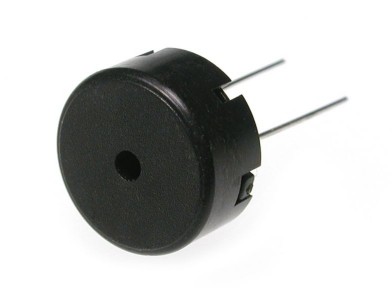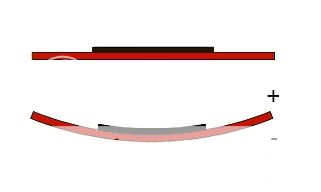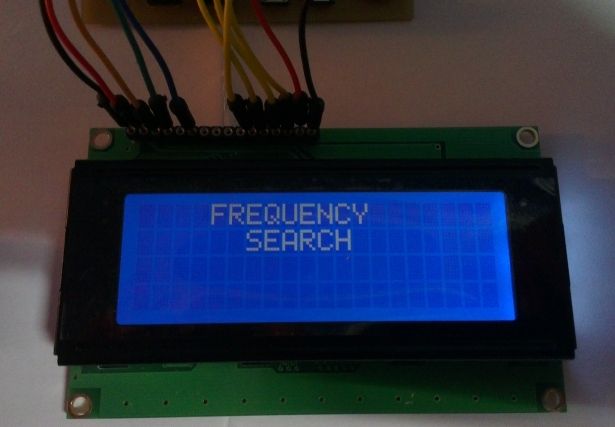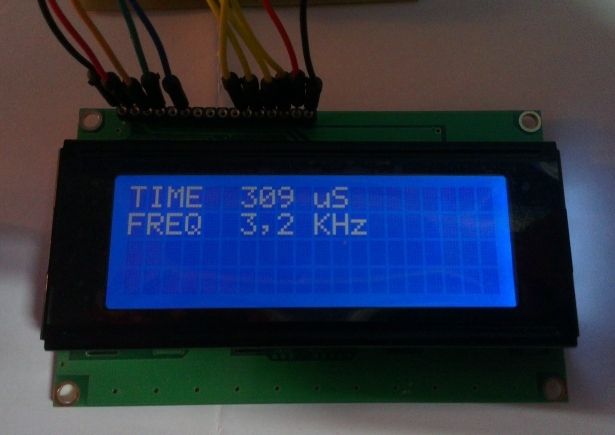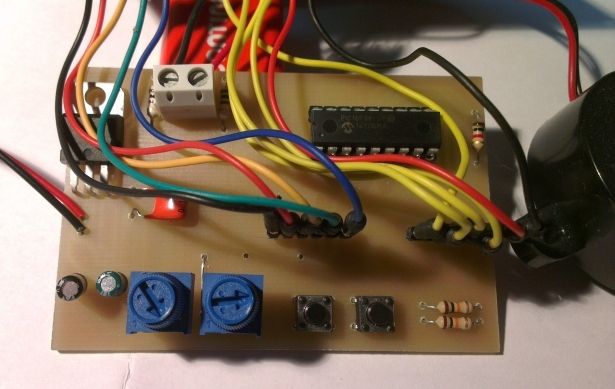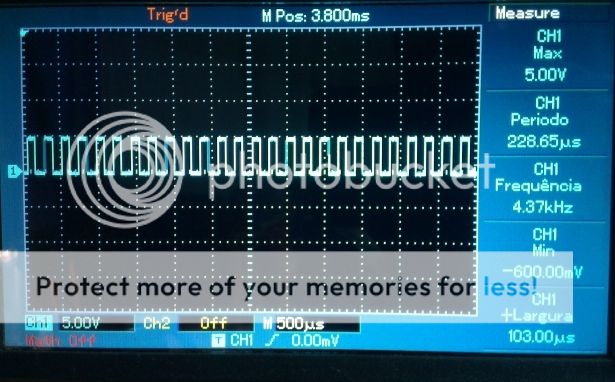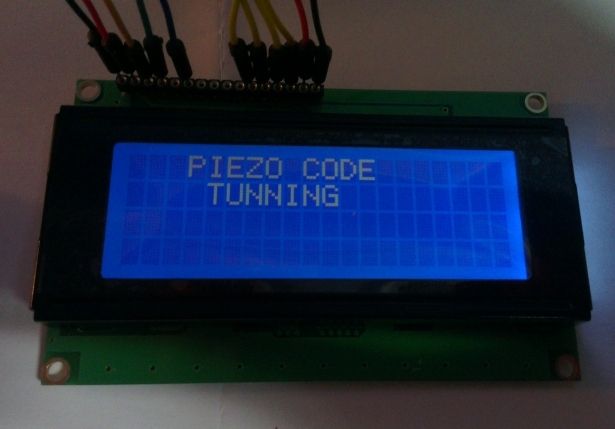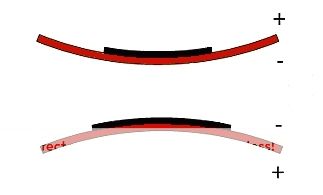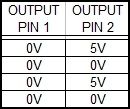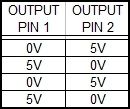![]() Ultimamente tenho desenvolvido alguns circuitos de controlo e alarme para máquinas industriais e como elemento de sinalização sonoro uso frequentemente piezos.
Ultimamente tenho desenvolvido alguns circuitos de controlo e alarme para máquinas industriais e como elemento de sinalização sonoro uso frequentemente piezos.
Os piezos são componentes fáceis de encontrar no mercado, de tamanho reduzido e existem para várias voltagens e frequências.
Aplicando uma tensão nos terminais do piezo, este move-se e ouve-se um estalido. Desligando a tensão ele volta á posição normal.
Para ele fornecer um som contínuo é necessário aplicar uma certa frequência para ele vibrar correctamente.
![]() Lately I have developed some control and alarm circuits for industrial equipment and for sound components i often use piezos.
Lately I have developed some control and alarm circuits for industrial equipment and for sound components i often use piezos.
Piezos are components easy to find on the market, small in size and available in various voltages and frequencies.
Applying a voltage at the piezo terminals, this makes the internal material to bend and that makes you hear a click. Turning the voltage off it bends back to normal its position.
For it produce a continuous sound it is necessary to apply a certain frequency to vibrate it correctly.
A gama de frequência do piezo é muito reduzida e anda sempre entre os 2Khz e os 4 Khz.
A dificuldade está em encontrar a frequência certa para cada modelo para ele tocar na sua potência máxima, mesmo com a indicação do seu datasheet.
Por esse motivo desenvolvi este simples circuito que inclui um 16F88 e produz uma gama de frequências de 1.6Khz até aos 5.6Khz capaz de testar a maior parte dos piezos existentes no mercado.
The frequency range of the piezo is very small and always between 2Khz and 4 kHz.
The difficulty is in finding the right frequency for each model so it can produce a loud sound, even with an indication of their datasheet.
Therefore i developed this simple circuit that includes a 16F88 and produces a range of frequencies from 1.6Khz up to 5.6Khz which is more than enough to test most of the piezos existing on the market.
Ao ligar o circuito, é apresentado um menu com duas opções ( procura por frequências ou por código ).
A primeira opção permite navegar pelas frequências e, estando o piezo ligado nos terminais de saída, verificar como reage o piezo consoante a frequência que se vai escolhendo.
When turning on the circuit, a menu with two options appears (frequency search or code).
The first option lets you navigate through the frequency and, with the piezo connected at the output terminals, we can check how the piezo reacts depending on the frequency being chosen.
A frequência pode ser ajustada usando ambos os potenciómetros. Na primeira linha do LCD mostra o período.
A segunda linha mostra a frequência que está a ser gerada.
The frequency can be adjusted using both potentiometers. In the first line of the LCD shows the period.
The second line shows the frequency being generated.
O circuito é bastante simples. Usa apenas um microcontrolador 16F88, dois pulsadores para seleccionar, um display 20x4 e dois potenciómetros.
Uma vez que é alimentado por uma pilha de 9v, e a maior parte dos piezos que uso são de 5V, coloquei um regulador 7805 para regular a tensão a 5V.
Um conector de parafuso foi usado para ligar o piezo a ser testado.
The circuit is quite simple. Basic components are only a microcontroller 16F88, two push buttons to select options and turn on/off the output, a 20x4 display and two potentiometers.
Since it is powered by a 9V battery and most piezos i use are 5v, i also used a 7805 regulator to maintain the voltage at 5V.
A screw connector is used to connect the piezo.
A qualquer altura pode-se ligar ou desligar a saída para o piezo usando um dos pulsadores. O símbolo de altifalante é mostrado quando a saída está activa.
Para validar a frequência que está a ser gerada, liguei o osciloscópio nos terminais da saída.
At any time you can turn on or off the output to the piezo using one of the pushbuttons. The speaker symbol is shown when the output is active.
To validate the frequency that is being generated, i used the oscilloscope and connected it at the output.
Validando com o osciloscópio, os valores não são exactos por causa dos arredondamentos mas estão muito aproximados o que, para para a aplicação que se destina serve perfeitamente.
Checking with the oscilloscope, the values are not exactly tha same because of rounding but are very close to what the application is for so in my opinion it is perfect.
A segunda opção no menu ( pesquisa por código ) permite não só variar a duração da tensão aplicada e a duração sem tensão, mas também varia a polaridade de ambos os terminais de saída.
The second option on the menu (search code) allows not only to vary the duration of the applied voltage and duration without voltage, but also toggles the polarity of both output terminals.
No ecrã seguinte podemos variar o tempo da zona alta ( 5V ) num dos potenciómetros e a zona baixa ( 0V ) com o segundo potenciómetro.
On the next screen we can increase or decrease the duration of the 5V with one of the potentiometers and the duration of the 0V with the second potentiometer.
Ao trocar a polaridade nos terminais de saída possibilita ao piezo para vibrar em toda a sua extensão fazendo com que a potencia sonora seja muito maior.
By switching the polarity at the output terminals will allow the piezo to bend throughout all its length causing the sound to be much louder.
Na verdade não estamos a colocar tensões negativas nos terminais do piezo, o que o circuito faz é trocar a voltagem da seguinte forma:
We are not actually puting in negative voltages at the piezo terminals, but instead the circuit does a voltage change like the table bellow:
Funcionamento normal
Normal operation
Funcionamento com polaridade invertida
Operation with inverted polarity

